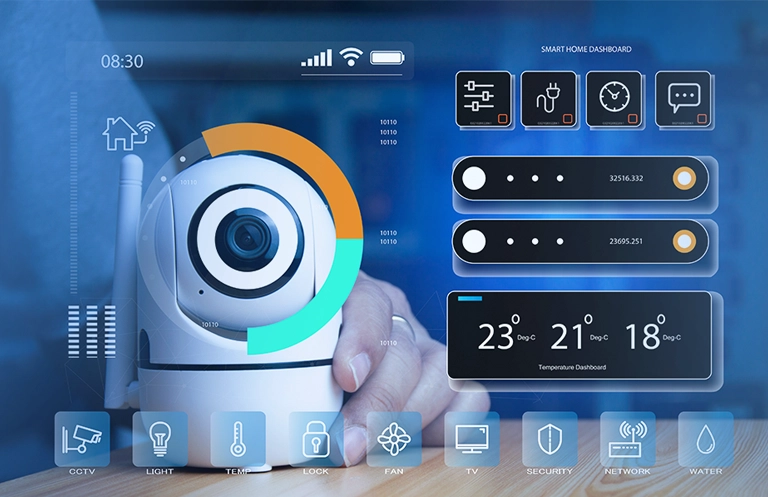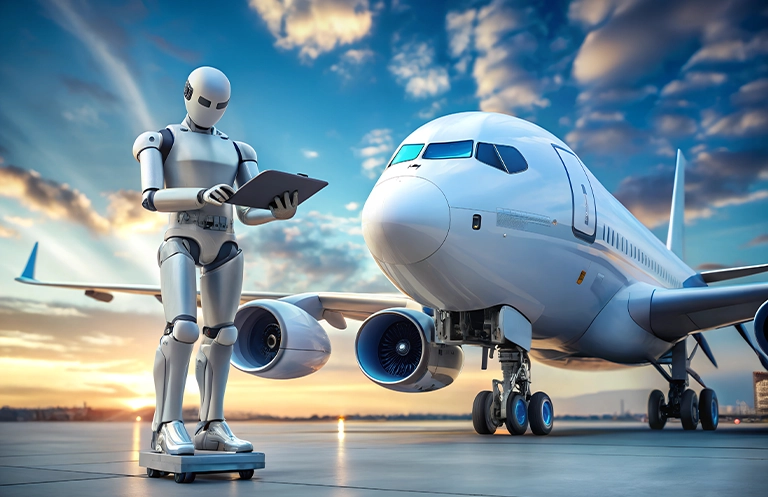We live in a highly connected world. Right from our homes and offices to cars and airplanes, we are connected. It is already transforming the data-driven world we live in. In this scenario, connectivity is taken for granted and not being connected is not an option. How does this impact companies operating in the avionics industry?
Well, with cost, performance, competition and fleet management constantly driving the metrics of airline operations, carriers are under tremendous pressure to boost ROI and bring secure, safe and seamless flight experience to its passengers. How can this be achieved? Some of the major actions include applying on-board software and data integration, securing the cockpit, and improving cabin communication. The flight deck also requires a digital overhaul to meet the pressing operational and demands of airlines.
All of this is now creating a revolutionary opportunity to transform the aerospace industry. Aviation professionals in the commercial aircraft domain reveal that spending on connected technologies will surge dramatically in the coming years.
How are connectivity and data transforming the aerospace industry?
The incredible amount of data generated during a flight is changing the way aircrafts operate – from take-off to landing. Connected aircrafts not only enhance the comfort and productivity in the cabin, but also improve the safety and efficiency in the cockpit and maintainability on the ground; while delivering more comfortable, efficient and safer experience for passengers.
What makes all this possible? Connected aircraft solutions help airlines to accomplish the above with the help of the antenna, satellite communication systems, data gateways and airtime services. More importantly, these solutions enable airlines to reduce costs and provide ease of ownership for owners and operators. The connected aircraft is changing the way people communicate aboard and with an aircraft. Let’s dig deeper dig deeper into what the connected aircraft really means for the industry and for the end users.
How does the connected aircraft benefit passengers and staff?
The connected aircraft does a lot more than just allowing the airline passengers to surf the internet at 30,000 feet. It connects the physical world to its digital counterpart by using software to join together a wide array of hardware systems, enabling new applications and services. It has not only augmented the passenger and crew experience but also improved effectiveness of flight operations, and that too while reducing the cost.
1) Improved aircraft health monitoring via predictive analysis
DOWNLOAD WHITEPAPER
Porting Android on PowerPC architecture for an Aircraft Engine Health Monitoring System (EHM)
The growing broadband and satellite-based connectivity allows airlines and operators to do capture data in real time. And real-time data capturing of critical avionics systems and in-flight components empowers better health trend monitoring of aircraft fleets and more efficient maintenance scheduling.
Airlines can now wirelessly load all data sources on and off their aircraft in real-time. Using secure communications technology, aircraft operators are now in a better position to avoid disruption and adverse weather, and to grab opportunities for reducing cost and driving faster turnaround times.
For an in-depth understanding on how the real time data can be used for predictive analytics and fault diagnostics of high-value engineering systems, please read our white paper: Predictive Analytics Using Google Cloud Platform Based Deep Learning.
Real-time data transfer helps to perform advanced analytics, which further helps airlines to avoid disruptions. Connected magnets for brakes, auxiliary power units and other components can turn unscheduled repairs to planned repairs at optimal times. Once the data is seamlessly transferred, analytics allow airlines to help customers use it in smart ways.
For example, bad weather accounts for the most of delays and it can damage planes too. Airlines operate in a very busy environment; if a single flight is disrupted, it makes it quite difficult for them to manage the schedule. With connected aircrafts’ 3D weather radar technology, airlines can ensure schedule integrity by identifying and planning around bad weather events. The system gives pilots real-time weather data on the flight path, allowing them to plan the safest, most efficient routes possible.
RELATED BLOG
Reducing Air Traffic congestion with Automatic Dependent Surveillance Broadcast (ADS-B)
In addition, as the number of aircraft continues to rise at a rapid rate, monitoring via radar and managing traffic congestion is getting tougher. ADS-B technologies are using real time data to enable better aircraft monitoring while improving safety.
2) Cost savings and new revenue streams
Connected Aircraft can translate into ancillary revenues from passengers paying for connectivity services; reduced fuel costs from better optimized flight routes; and better fleet utilization and reduced aircraft time on the ground, as a result of predictive maintenance.
Airlines want to be able to predict when a component is about to fail and change it before it does, to avoid aircraft downtime – predictive analysis shares data about potential mechanical issues in real time, or even before they happen. For instance, the brake control system monitors the aircraft braking system on most passenger-jets, today. Maintenance crews decide whether a repair is necessary through a physical measurement of a wear device on the brakes. Real-time connected monitoring of the brakes will greatly optimize that process.
3) Enhanced connectivity for passengers
It’s great news for passengers too. It’s no secret that customers value a reliable connection above all else. They saw inflight Wi-Fi as a necessity, not a luxury. Airlines are now able to provide global Wi-Fi services, even over oceans. It is possible to deliver seamless global broadband access that provides the same internet speed and reliability they get at home or in the office. The new generation of travelers – mainly business travelers – want to be connected at all times. Airlines that can provide this will definitely have a great competitive advantage.
4) Connected defense
Furthermore, Connected Aircraft can be used as Connected Defense. It can translate into situational awareness and mission efficiency for government and military operators by reducing fuel costs from better optimized flight routes; and better fleet utilization and increasing asset availability as a result of predictive maintenance.
Conclusion
To recapitulate, connected aircraft is a plane that unlocks new opportunities – to lower costs, arrive on time more often, and fly more safely and comfortably than ever before. To put it simply, a connected aircraft makes flying better for everyone involved. Connected aircraft solutions empower airlines to achieve the full potential. It will be ONLINE all the time, wherever it is in the world, and provides reliable performance in harsh environments to make modern air travel faster, more efficient and enjoyable. Pilots will be more prepared and passengers will be more pleased on the flight.
Possessing an in-depth avionics domain and process (DO-178B/C, DO-254, DO-160) expertise, eInfochips, an Arrow company, provides avionics solutions in compliance with EASA (European Aviation Safety Agency) and FAA (Federal Aviation Administration) guidelines.
We have delivered safety-critical hardware and software solutions for commercial airplanes, military aircraft, and UAVs. Along with design and development, we also extend our services for product migration, feature enhancements, bug fixing, and technical support. To know more about our aerospace offerings, please get in touch with us.













